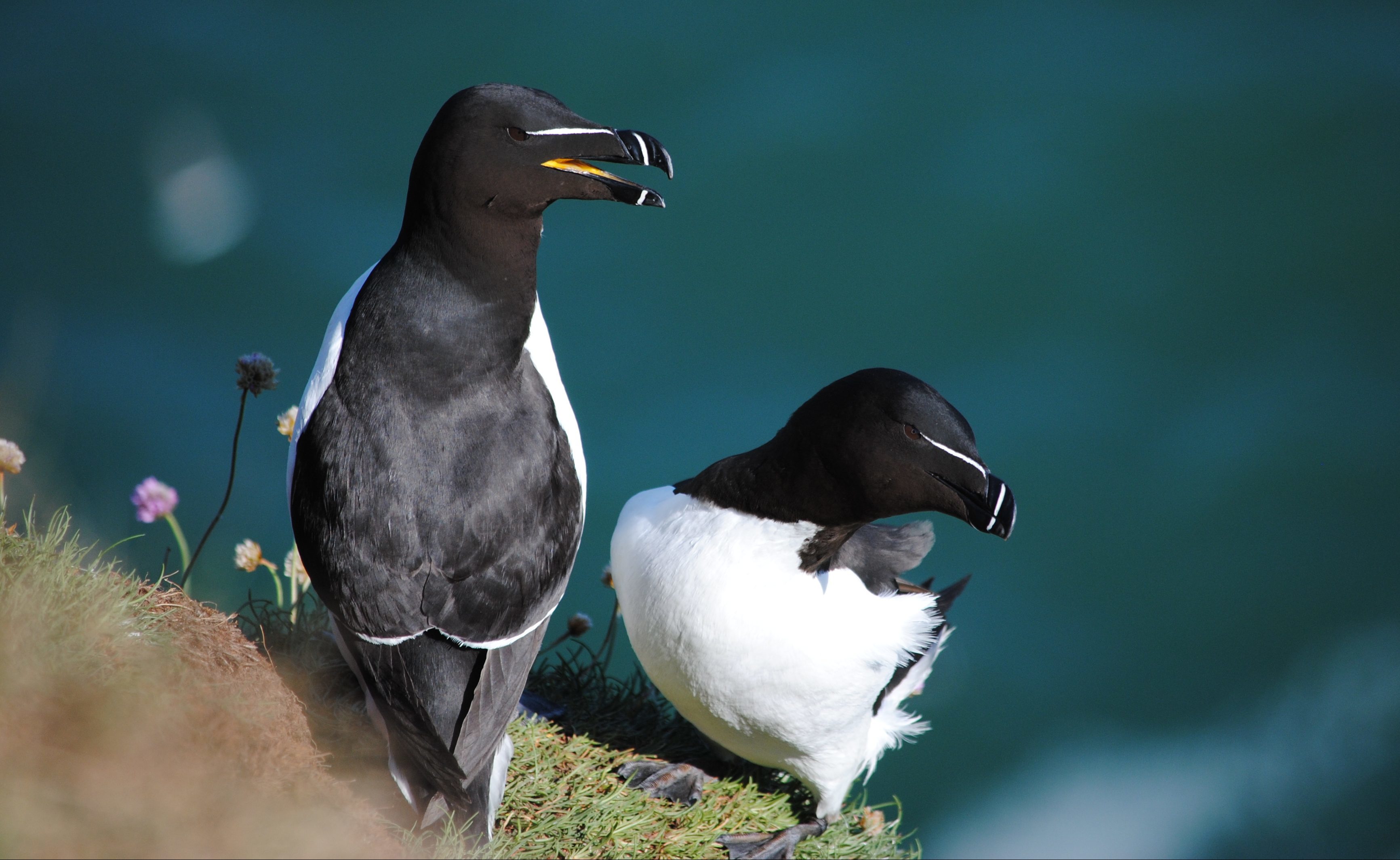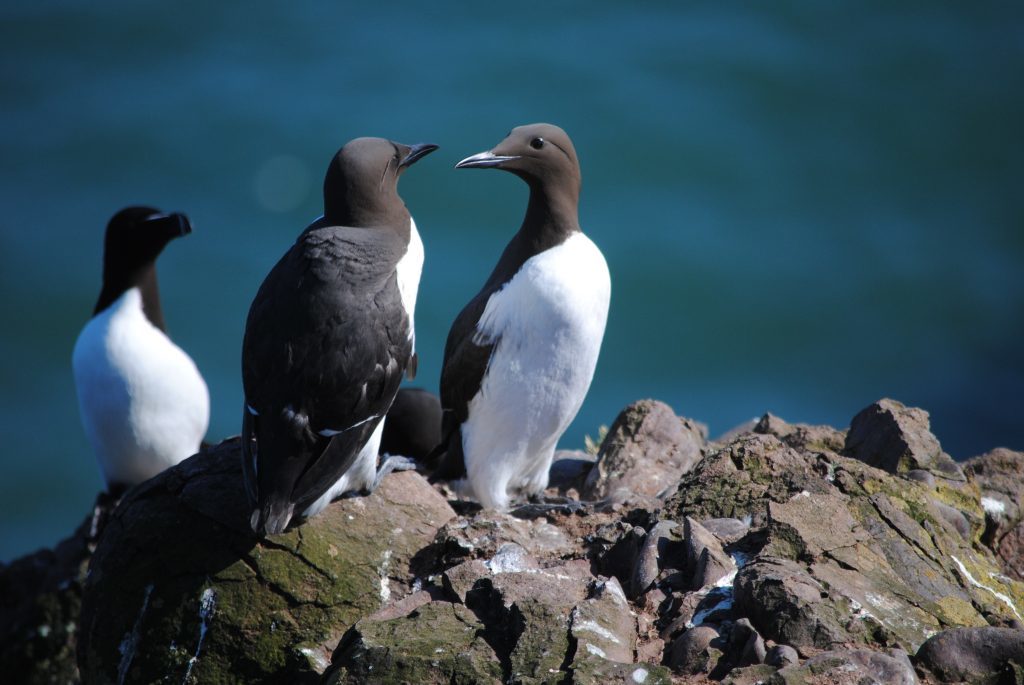I could hear them but not see them as they were just below the clifftop. I don’t like heights, so I crawled gingerly forward and peered over the edge to see a pair of razorbills looking straight back at me.
I was at Fowlsheugh, a few miles south of Stonehaven, and seeing these razorbills brought back childhood memories of a primary school trip to the Farne Islands – that magical scatter of rocky islets just off the Northumberland coast.
Razorbills, and their close cousin, the guillemot, were abundant on the Farnes but I had never seen either of these auks before and I remember finding their similarity to penguins most striking. Their erect stance and long body is indeed penguin-like and they are also very sociable. But unlike penguins, they can fly.
Guillemots in particular are very much part of our folklore as indicated by a host of common names from the past such as frowl, marrot, murre, quet and sea hen. Such familiarity with mankind was no doubt due to their importance as a source of food in remote coastal communities. The eggs in particular were collected but they were something of an acquired taste. Writing in the early 20th century, the Reverend Neil Mackenzie noted that while ‘they can be good eating when fresh’ other eggs ‘are as bad as the most vivid imagination can depict’.
Guillemots and razorbills are fascinating birds to watch. At the start of the breeding season, they gather below the cliffs and their excitement is palpable. They skid along the surface and there is much diving and chasing underwater. They also wheel in the air before swooping down to the sea like daredevils. As the season progresses, I particularly enjoy watching the huge rafts of adults bobbing in the water below the breeding cliffs, relishing the relaxation from the chores of incubating eggs or tending young.
The distinctive serrated bill of the aptly-named razorbill is just perfect for gripping onto sandeels and butterfish. Anyone who has ever held a butterfish in the hand will know just what a slippery handful it is.
As I watched the hustle and bustle of these auks on their nesting ledges at Fowlsheugh, I couldn’t help but reflect upon a missing cousin. Many centuries ago, on gentler slopes below the teeming throngs of cliff nesters, there would in all probability have been great auks too.
Archaeological evidence suggests that in the distant past this large flightless auk was tolerably common in some coastal parts of Scotland. But they were relentlessly hunted and the last Scottish great auk was killed by trophy collectors in Orkney in 1813. A few decades later, the only remaining pair in the world met a similar fate in Iceland; a telling reminder of the fragility of nature and the devastation so often wrought by the hand of man.
Info
Fowlsheugh is also a great place to see nesting kittiwakes, attractive and delicate gulls that outside the breeding season spend most of their time far out to sea.











